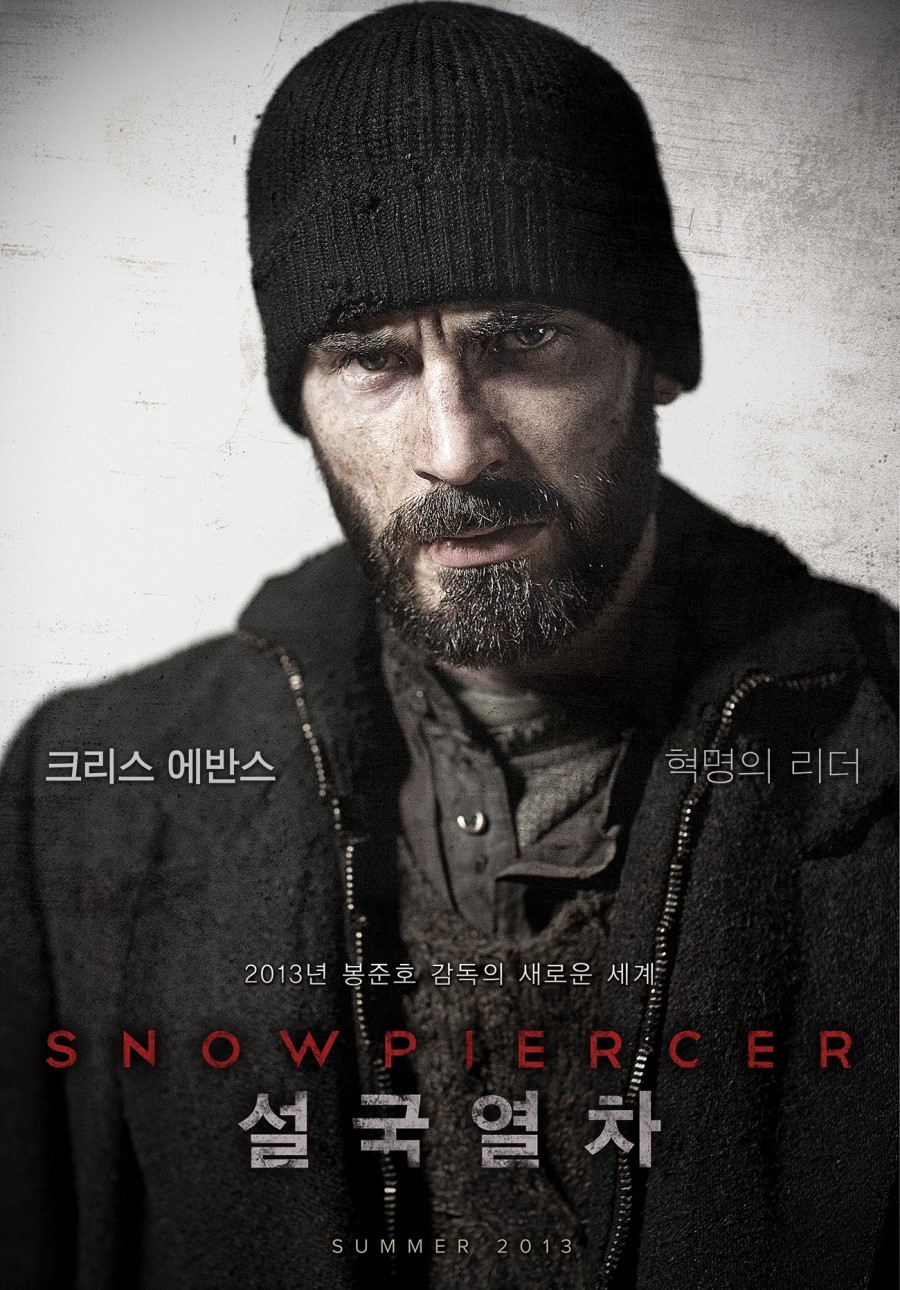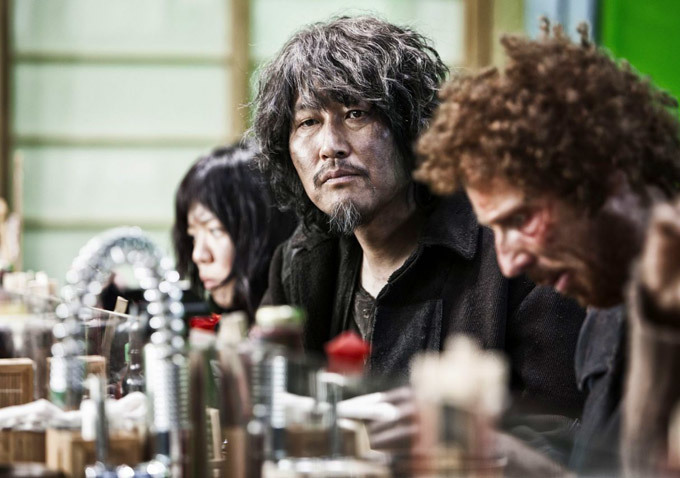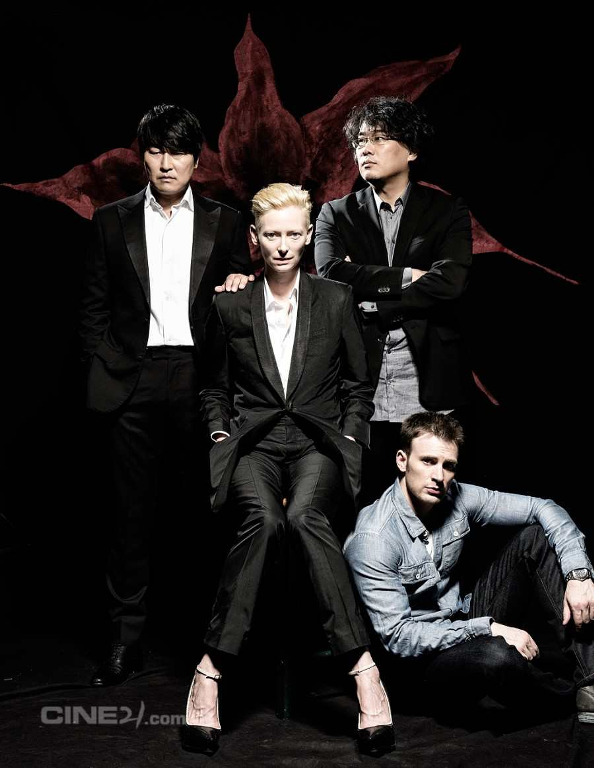 Finally spring has come around, and it is truly the time of cinematic blockbusters. Captain America: The Winter Soldier is breaking records for Marvel, and Noah has taken on the risky job of trying to translate a biblical story into an action movie. Snowpiercer features elements from both movies, namely Chris Evans in a leading role and an ark as the main site of the action, and uses them in astounding ways.
Finally spring has come around, and it is truly the time of cinematic blockbusters. Captain America: The Winter Soldier is breaking records for Marvel, and Noah has taken on the risky job of trying to translate a biblical story into an action movie. Snowpiercer features elements from both movies, namely Chris Evans in a leading role and an ark as the main site of the action, and uses them in astounding ways.
Based on the French graphic novel Le Transperceneige, the story is set in a world where humanity has failed to save itself from the effects of global warming. A last failed attempt at countering global warming has resulted in the whole earth being covered by snow and ice, which makes it uninhabitable for human beings.
Just a certain amount were able to survive on a gigantic train which is constantly in motion and moves across the whole globe. People on the train were separated into different classes depending on the ticket they managed to get a hold of when they first boarded. Seventeen years later, in the year 2031, a riot breaks out among those in the lowest class. Under the leadership of Curtis Everett (Chris Evans) and using the knowledge of security expert Namgoong Minsu (Song Kang-ho), they try to fight their way up to the very front of the train so their suffering will finally end.
This is really just a very rough sketch of the plot but giving away anything more would mean getting dangerously close to spoiling the movie, which shall be avoided in this article. But even this short overview might make the reader understand just why it took Snowpiercer so long to finally hit theaters. Having been released in August 2013 in South Korea, the homeland of director Bong Joon-ho, the film was subjected to months of discussions regarding its final version. It has been released on varying dates in different countries over the last few months, with IMDB listing the last release date as 27th June 2014 in the USA.
The setup really does sound rather fantastical (people living in a gigantic train which has never stopped going during the last 17 years?) and it would be understandable if this alienates people, since the viewers have to suspend their disbelief considerably during a handful moments of the film. Then again, knowing that the basis for the storyline is a graphic novel might explain this absurdity a little bit. The movie can also be classified as science fiction, a genre well known for using outlandish plots to comment on current sociopolitical issues.
 In that regard, Snowpiercer is no exception. The movie manages to subtly refer to environmental challenges humanity faces by making global warming the premise for its plot. The occasionally clichéd, yet gripping depiction of the class system inside the train can be seen as mirroring the current development in many societies in which the barriers between different social groups seem to become more and more insurmountable.
In that regard, Snowpiercer is no exception. The movie manages to subtly refer to environmental challenges humanity faces by making global warming the premise for its plot. The occasionally clichéd, yet gripping depiction of the class system inside the train can be seen as mirroring the current development in many societies in which the barriers between different social groups seem to become more and more insurmountable.
The implications of this class system in Snowpiercer become especially meaningful if considered in the context of Bong Joon-ho’s identity as a Korean director. There are multiple moments when one of the higher-ups named Mason, played by an unrecognizable Tilda Swinton, insists that every person in the train has to be at their fixed place, like a cog in a machine. In one scene, she compares the train with a body: The front with the privileged passengers and the revered inventor of the train, Wilford, is the hat on top and the tail end with the poorest passengers is the shoe at the very bottom of the body. She advises the poor passengers with:
“Know your place. Accept your place. Be a shoe.”
For those viewers who know or have tried to become acquainted to Korean culture, sentences like this have to jump out as an allusion to Confucianism; although it seems to be presented in a rather perverted form in this movie. The belief that a harmonious relationship depends on the involved people’s knowledge of their fixed proper place in society is used by the leaders in the train to subjugate the poor and to keep them docile.
But Snowpiercer does not just deal with current subjects, its themes can also be seen as traditional motifs in cinema. From one of the first films ever shown, L’arrivée d’un train en gare de La Ciotat (Arrival of a Train at La Ciotat, 1896), to classics like Chaplin’s Modern Times (1936) to Snowpiercer, technological progress in general and trains in particular have fascinated directors and audiences alike. The relationship with these machines has often been a strained one, and Snowpiercer continues this motif by presenting its train as both a lifesaver and a machine of doom for its poor inhabitants.
This technological progress and refinement is juxtaposed with the desperation of the tail-section passengers, who live like caged animals that no one else on the train cares for. Their only option is to revolt over and over again, and the violence inherent in this is not sugarcoated in any way. The reader must be warned that they will witness mostly raw, sometimes stylized brutality in this movie and that those who dislike seeing blood or wounds should stay away from it.
 Rating this movie is difficult. In this review, it will receive 4 out of 5. The deductions are mainly for the far-fetched storyline and the missing explanations for many occurrences which are presented as facts in this movie. The characters might have also been fleshed out a little bit better. Yet Snowpiercer can still get such a good evaluation when the viewer focuses on its metaphoric traits rather than logical consistency. If the viewer is willing to accept the plot, many subjects shown in the movie are worth mulling over even after the film has ended.
Rating this movie is difficult. In this review, it will receive 4 out of 5. The deductions are mainly for the far-fetched storyline and the missing explanations for many occurrences which are presented as facts in this movie. The characters might have also been fleshed out a little bit better. Yet Snowpiercer can still get such a good evaluation when the viewer focuses on its metaphoric traits rather than logical consistency. If the viewer is willing to accept the plot, many subjects shown in the movie are worth mulling over even after the film has ended.
The visuals are also a treat. Especially the color palettes used for the different train sections are impressive. And last but not least, especially on a site like Seoulbeats, one shouldn’t forget to value the diversity of the excellent cast which represents a nice contrast to the usual white-man-saves-own-family-from-catastrophe-against-backdrop-of-dying-people-of-color movies that Hollywood loves to produce.
(Wikipedia [1][2], Indiewire, IMDB [1][2]; images via The Weinstein Company/CJ Entertainment and CINE21)


